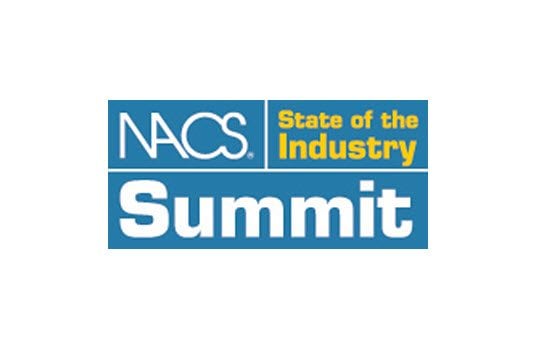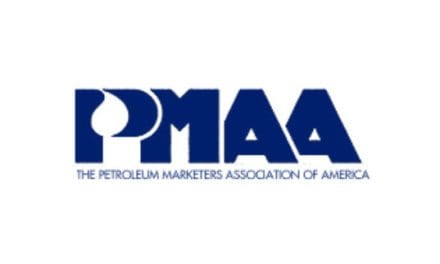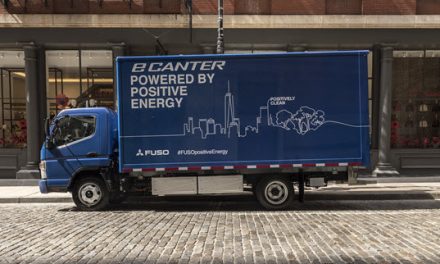U.S. convenience stores experienced record in-store sales of $233.0 billion in 2016—and the third straight year of $10-billion-plus in pretax profits—according to the newly released NACS State of the Industry Data, the convenience and fuel retailing industry’s premier benchmarks and key performance category insights.
Industry Snapshot
2015 2016 % Change
U.S. Store Count 154,195 154,535 FLAT
Inside Sales $225.8B $233.0B 3.2%
Fuel Sales $349.0B $316.8B (9.2)%
Total Sales $574.8B $549.9B (4.3)%
Pretax Profit $10.6B $10.2B (3.8)%
Sources: Nielsen/TDLinx; NACS; U.S. Energy Information Administration (EIA)
Convenience stores, which sell more than 80% of the fuel purchased in the country, reported a 9.2% decline in fuel sales. This was driven by another year of low gas prices, which averaged $2.17 for the year compared with $2.44 in 2015. Fuel sales volume was up 2.6%, riding the wave of continued economic recovery. Meanwhile, fuel margins in 2016 dropped to 23.1 cents compared with 23.4 cents in 2015, but due to increased sales volume, overall fuel gross profit increased 1.6% per store per month.
Top In-Store Categories
The top 10 in-store categories ranked by sales dollars represent about 80% of all in-store sales. In 2016, eight of the 10 top in-store categories saw positive sales, including cigarettes, and nine had positive gross profit dollar growth. Factors such as low fuel prices, job growth and more discretionary income in consumers’ wallets drove spending inside the store.
Here’s how in-store sales performed in 2016:
- Tobacco (cigarettes and OTP): 36% of in-store sales
- Foodservice (prepared and commissary food; hot, cold and dispensed beverages): 21.7%
- Packaged beverages (carbonated soft drinks, energy drinks, sports drinks, water, juices and teas): 15%
- Center of the store (salty, candy, packaged sweet snacks and alternative snacks): 9.8%
- Beer: 6.7% (12.2% for stores selling beer)
- Other: 10.8%
While tobacco products, including cigarettes, were 36% of in-store sales dollars, they accounted for only 18.2% of gross profit dollars. Other tobacco products (OTP) are a bright spot, achieving double-digit growth in both sales and gross profit dollars. Since 2001, U.S. smoking rates have continued to decline, driven by individuals between the ages of 18 and 29. Product innovation and consumers moving from combustible tobacco products to other forms of tobacco are driving the OTP category.
Foodservice, a broad category that includes prepared and commissary foods, hot dispensed beverages (coffee) and cold (fountain) and frozen dispensed (slushee) drinks, continues to be a key focus for growth in the convenience store channel. Foodservice contributed 21.7% of in-store sales in 2016 and accounted for 35.2% of gross profit dollars, with prepared food and cold dispensed beverages driving the category’s growth. In 2016, convenience stores experienced growth in every foodservice subcategory except for commissary and frozen dispensed beverages.
Packaged beverages (non-alcohol) accounted for 18.5% of gross profit dollars. Within the category, enhanced water (12.3% increase in sales), sports drinks (4.5%) and bottled water (3.9%) led sales growth from the cooler in 2016, signaling a move by consumers toward healthier and/or functional beverage options.
Snacking categories, including salty, candy and alternative snacks, all had strong growth as some consumers, especially Millennials, moved toward snacking and away from traditional meals. For the second consecutive year, alternative snacks, a category driven by protein- and energy-rich items, reached the top 10 in-store merchandise categories, also signaling a desire by consumers for immediate/healthier snacking options.
Operating Expenses
Despite record in-store sales, direct store operating expenses (DSOEs), encompassing wages, payroll taxes, health-care insurance, card fees, utilities, repairs/maintenance and supplies, as well as several other categories including franchise fees and property taxes, outpaced inside gross profit dollars for the second consecutive year. This trend is creating challenges for convenience retailers as they look to grow their businesses.
Beyond sales, convenience stores are an important part of the economy. The convenience and fuel retailing industry employed 2.5 million people in 2016, wages were up 8.1% and the average wage for a store associate is $9.99 per hour. Turnover for store associates was 133%, up from 95% in 2015, according to the recently released NACS Compensation Report of 2016 Data. The rise is primarily due to tighter labor markets resulting from being in the seventh year of economic recovery.
There is a notable dichotomy between the top-quartile performers and bottom-quartile performers within the convenience store industry, with nearly a 10-fold difference in store operating profit between the two quartiles. In terms of foodservice, the top quartile is excelling at hot dispensed beverages, with 6.6 times the coffee sales compared to the bottom quartile and more than three times in prepared food sales.
The industry’s 2016 metrics are based on the NACS State of the Industry survey powered by its wholly owned subsidiary CSX LLC, the industry’s largest online database of financial and operating data. Complete data and analysis will be released in June in the NACS State of the Industry Report of 2016 Data.









